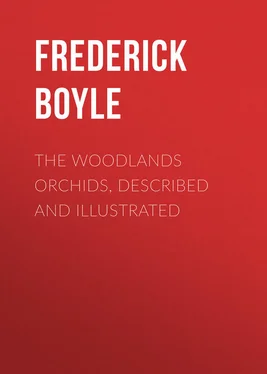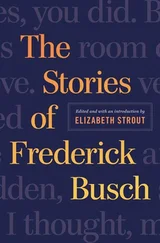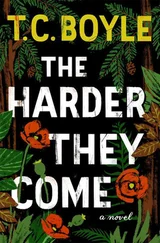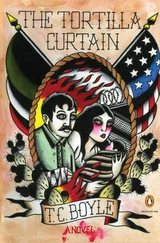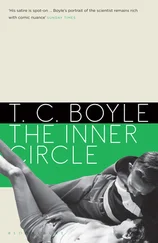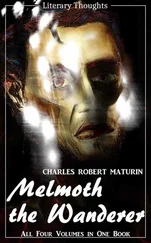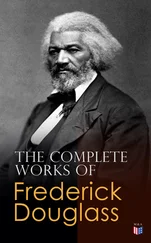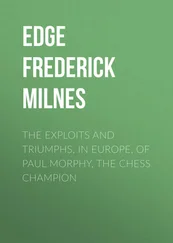Frederick Boyle - The Woodlands Orchids, Described and Illustrated
Здесь есть возможность читать онлайн «Frederick Boyle - The Woodlands Orchids, Described and Illustrated» — ознакомительный отрывок электронной книги совершенно бесплатно, а после прочтения отрывка купить полную версию. В некоторых случаях можно слушать аудио, скачать через торрент в формате fb2 и присутствует краткое содержание. ISBN: , Жанр: foreign_antique, foreign_prose, на английском языке. Описание произведения, (предисловие) а так же отзывы посетителей доступны на портале библиотеки ЛибКат.
- Название:The Woodlands Orchids, Described and Illustrated
- Автор:
- Жанр:
- Год:неизвестен
- ISBN:http://www.gutenberg.org/ebooks/32205
- Рейтинг книги:5 / 5. Голосов: 1
-
Избранное:Добавить в избранное
- Отзывы:
-
Ваша оценка:
- 100
- 1
- 2
- 3
- 4
- 5
The Woodlands Orchids, Described and Illustrated: краткое содержание, описание и аннотация
Предлагаем к чтению аннотацию, описание, краткое содержание или предисловие (зависит от того, что написал сам автор книги «The Woodlands Orchids, Described and Illustrated»). Если вы не нашли необходимую информацию о книге — напишите в комментариях, мы постараемся отыскать её.
The Woodlands Orchids, Described and Illustrated — читать онлайн ознакомительный отрывок
Ниже представлен текст книги, разбитый по страницам. Система сохранения места последней прочитанной страницы, позволяет с удобством читать онлайн бесплатно книгу «The Woodlands Orchids, Described and Illustrated», без необходимости каждый раз заново искать на чём Вы остановились. Поставьте закладку, и сможете в любой момент перейти на страницу, на которой закончили чтение.
Интервал:
Закладка:
Pyramus. – Sepals of the flushed stone-colour which I, at least, admire so much; but the flush is more conspicuous than usual. Petals clear rose. Lip vivid crimson, with the same yellow blotches under the white tube.
Bella. – The purplish crimson sepals and petals are tipped with buff. Lip shovel-shaped, dark crimson.
Sappho. – Here the pale purple sepals only are tipped with buff, while the petals, which curl over, are rose. The carmine of the lip is very pretty.
Macfarlanei II. – Sepals of the same colour, but greenish, strongly marked with the distinctive spots of Catt. Leopoldii, edged with rose; petals rose, lined with crimson on either side of the white midrib. The long tube opening shows a strongly yellow throat. The labellum is short, but superb in colour.
Myersiana. – A large form. Sepals dusky, tinged with crimson at the edges. Petals softly crimson. Very long tube. The crimson lip has a pale margin, and a pale blotch in the front.
Cleopatra. – One of the very best. Like that above in petal and sepal, but paler. The broad tube, however, is snow-white, saving a touch of magenta-crimson, bright as a ruby, at the tip of the lobes. And the lip, finely frilled, is all magenta-crimson, with not a mark upon it from throat to edge.
Wolstenholmae. – White, the sepals tinted with purple. Petals broad, with a purple outline. Lip narrow and long, of a colour unique, which may be described as crimson-purple. In the throat are two curious white bars; between them run arching purple lines close set, which, on the outer side of the bars, extend to the edge of the lip. A very remarkable flower.
Eximia. – Also very remarkable – not to say uncanny. The narrow sepals and petals, almost white, have a mottling of rosy mauve along the edges, which looks unwholesome, as if caused by disease. But the long paddle-shaped lip, crimson, changing to purple as it expands, is very fine. It has two pale yellow ‘eyes’ elongated in an extraordinary manner.
Lord Roberts. – Very handsome and peculiar. The colour of the sepals, strongly folded back, is warm grey, tinged and faintly lined with crimson; this tinge is much more pronounced in the petals. The large tubular lip, finely opened, is uniform crimson-magenta, not so dark as usual.
A LEGEND OF ROEZL
So soon as I began to take interest in orchids I was struck with the number of odd facts and incidents in that field of botany. One gains but a glimpse of them, as a rule, in some record of travel or some scientific treatise; and at an early date it occurred to me that if the stories to which these fragments belong could be recovered, they would prove to be not only curious and interesting but amusing – sometimes terrible. I began to collect, therefore, and in the pages following I offer some of the results.
It is right to begin with a legend of Roezl, if only because his name will often recur; but also he was incomparably the greatest of those able and energetic men who have roamed the savage world in search of new plants for our study and enjoyment. Almost any other mortal who had gone through adventures and experiences such as his in our time would have made a book and a sensation; but the great collector never published anything, I believe, beyond a statement of scientific facts from time to time. This is not the place to deal with his career; I am only telling stories. But it is not to be dismissed without a word.
Roezl will be gratefully remembered so long as science and horticulture survive the triumph of democracy. I have heard it alleged that he discovered eight hundred new species of plant or tree. It is credible. In the memoir published by the Gardeners’ Chronicle , which was brief of necessity, fourscore were enumerated, with the addition, here, of ‘many others,’ there, of ‘etc.’ Roezl was no specialist. A wise regard for his own interest confined him almost to orchids in the later years. But in his catalogue of achievements I find new lilies, new conifers, fuchsias, agaves, cacti, begonias, saxifrage, dahlias, convolvuli, tropaeolums, tacsonias – a multitude, in fact, beyond reckoning. In one expedition he sent eight tons of orchids to Europe; in another ten tons of cacti, agaves, dion, and orchids! The record of his travels is startling; and it must be observed that Roezl’s first aim always was to escape from the beaten track. His journeyings were explorations. Many an Indian tribe never saw a white man before, and some, perhaps, have never seen one since. Mexico was his first hunting-ground, and thither he returned more than once; Cuba the second. Thence he was drawn to the Rocky Mountains, California, and Sierra Nevada. Then in succession he visited Panama, New Granada, Sierra Nevada again, California again, Washington Territory, Panama again, Bonaventura, the Cauca valley, Antioquia, Northern Peru, crossed the Andes, returned to Bonaventura, and thence to Europe. Starting again he searched Colorado Territory, New Mexico, California, the Sierra Madre; worked his way to Caracas, thence through Venezuela, crossed to Cuba, to Vera Cruz, explored the state of Oajaca in Mexico, sailed to Lima, crossed the Andes again to Tarma and Changamaga, back into Southern Peru, wandered as far as the Lake of Titicaca, searched Bolivia, traversed the Snowy Mountains to Yungas, back to Lima and Arica, crossed the Andes a third time, visited Ecuador, and made his way back to the valley of the Cauca. How many thousand miles of journeying this chronicle represents is a problem for laborious youth. And the botanist uses roads, railways, and horses only to get him from one scene of operations to another. He works afoot.
It is good to know that Roezl had his reward. Eighteen years ago he died, full of years and honours, in his native Bohemia. And the Kaiser himself was represented by a high dignitary at the unveiling of his statue in Prague.
The experiences I am about to tell were made in the course of that long march through the woods from La Guayra in Venezuela to Ocaña in New Granada. Among the special trophies of it was Cattleya Roezlii, a variety of Cattleya speciosissima; but I am not aware that the secluded tribe whose habits interested Roezl so much had any immediate connection with this plant. Perhaps before going further it may be well to note that any assertion of the great Collector might be admitted not only as an honest report, but also as a fact which he had verified, so far as was possible. Dr. Johnson was not more careful to speak the whole truth and nothing but the truth.
It was somewhere round the sources of the Amazons that Roezl sojourned for a while in a village of those strange people whom the Spaniards call Pintados – ‘painted’ Indians. Their colour, in fact, is piebald – light brown, dark brown, and a livid tint commonly described as red, in blotches. They are seen occasionally in Guiana, more rarely in Venezuela and Brazil. The colouring is ascribed to disease, rather because it is so hideous and abnormal, perhaps, than for a solid reason. Roezl thought it ‘natural.’
He was making his way through those endless forests by compass, with two mestizos from Columbia who had served him on a former journey, and a negro boy. For guides and carriers he depended on the Indians, who passed him from settlement to settlement. It is fitting to observe here that Roezl never carried firearms of any sort at any time – so he used to say. Of great stature and prodigious muscle, utterly fearless, never unprepared, happen what might, he passed forty years in such wandering as I have outlined, and never had occasion to strike a blow. Several times he found himself between contending factions, the armed mobs of Spanish America, and lost everything; many times was he robbed, but never, I believe, assaulted. Nerve and humour protected him. As for the wild Indians, I fancy that they were overawed by his imposing appearance; and especially by an iron hook which occupied the place of his left hand, smashed by an accident.
Читать дальшеИнтервал:
Закладка:
Похожие книги на «The Woodlands Orchids, Described and Illustrated»
Представляем Вашему вниманию похожие книги на «The Woodlands Orchids, Described and Illustrated» списком для выбора. Мы отобрали схожую по названию и смыслу литературу в надежде предоставить читателям больше вариантов отыскать новые, интересные, ещё непрочитанные произведения.
Обсуждение, отзывы о книге «The Woodlands Orchids, Described and Illustrated» и просто собственные мнения читателей. Оставьте ваши комментарии, напишите, что Вы думаете о произведении, его смысле или главных героях. Укажите что конкретно понравилось, а что нет, и почему Вы так считаете.
